At Houlte, we treat the living room as a place for calm and delight. This short guide will help you pick the right stand and size so your TV and furniture feel in balance.
A media piece should be a few inches wider than your screen. Aim to place the center of the display about 42–48 inches from the floor for easy viewing. Typical depths run 12–20+ inches to fit players and speakers.
We explain how to match panel width to console width so the screen does not overhang. You will learn smart tips for height, storage, and layout that keep a room open and tidy.
Houlte crafts furniture that folds comfort and style together. With North America and UK warehouses, delivery is fast and reliable for people across the US and beyond.

Choosing the Right Media Console in the Present Day: A How-To Overview
Choose a stand that balances your screen, storage needs, and room flow. Start by listing your goals: a compact stand for current devices or a wider piece for future upgrades.
Measure the TV’s actual panel width in inches and pick a stand a few inches wider for stability and a refined look. Confirm the seated center-of-screen height lands near 42–48 inches to keep viewing comfortable at eye level.
Depth matters: select 15–20 inches if you run players, soundbars, and gaming devices. Choose closed storage to hide clutter or open shelving for easy access. Allow airflow and clear cable paths so devices run cool and remain reachable.
- Define goals and future upgrades.
- Use precise measurements—panel width, stand width, and height.
- Balance storage, ventilation, and the room’s look.
Houlte designs focus on comfort and harmony, helping pieces fit your space and lifestyle. Fast fulfillment across the US, Canada, and the UK keeps your selection on schedule.
Measurement Basics: Screen Size, Actual Width, and Room Dimensions
Start by converting the TV diagonal into usable inches so the stand and screen match visually and safely.
TV diagonal versus actual panel dimensions
TVs list diagonal size, but that number does not show the panel’s width or height. Use the panel’s actual width when choosing a stand to avoid a piece that is too narrow.
Using 16:9 math for precise measurements
For modern 16:9 panels apply these formulas:
- Screen width = Diagonal × 0.87157552765421
- Screen height = Diagonal × 0.490261259680549
For example, a 55-inch screen is about 47.9 inches wide and 27 inches tall. Add inches for bezels and stand legs; many tvs exceed the bare panel by one to two inches per side.
Practical tips: let the stand exceed the calculated width for safety and balance. Check room and walkway dimensions so the stand depth and storage do not block traffic. Confirm internal cabinet dimensions if you plan to store devices or components.
how big should media console be
Pick a console width that gives your screen room to sit confidently on the wall plane. Use clear targets tied to TV diagonal so the stand and room feel in balance.

Console width targets by TV diagonal
Below are practical width ranges to guide decisions. Leave 6–10 extra inches total so the screen does not overwhelm the furniture and to allow space for a soundbar or décor.
- 32–40 inch TVs: choose stands around 45–50 inches for proper side clearance and a composed look.
- 42–55 inch TVs: pick a 55–60 inch console to maintain balance and avoid overhang.
- 60–65 inch TVs: target 65–70 inches to give room for remotes, storage, or a center speaker without crowding.
- 70 inch and larger: select 75 inches or more for stability and better proportion across the room and wall.
Treat these numbers as minimums. If people plan to upgrade the screen, choose a slightly wider piece now to avoid replacing furniture later.
Tip: Tape the footprint on the floor to confirm dimensions, sightlines, and how the look will land in the space. Verify the panel’s measured width so the stand width exceeds the actual screen dimensions.
Console Height and Eye Level: Getting Center Screen at the Right Height
Set the screen height to match seated eye level so viewing stays comfortable and natural. The goal is to place the center of the screen about 42–48 inches from the floor to cut neck strain and keep long sessions pleasant.
Typical height ranges for furniture and stands
Use common stand heights as quick guides: low-profile 20–25 inches, standard 25–30 inches, and tall 30–36 inches. Check the TV feet height and add that to the stand size so the screen center falls within the 42–48 inch window.
Wall mounting and final placement tips
When the TV is on the wall, mount the bracket so the center aligns with seated eye level, then set the stand height under it so speakers and a soundbar clear the lower bezel. Consider seat height and recline: lower sofas pair with low stands, taller seating works with higher pieces.
- Aim to place the center screen at roughly 42–48 inches for best viewing and neck comfort.
- Verify combined stand and TV feet height before final placement; adjust the stand or bracket as needed.
- Watch for ventilation and glare; avoid putting speakers or vents directly against the wall or low obstructions.
Finish by measuring once the TV is on its feet: many manufacturer stands add around inches to the total display height, so a last check ensures the screen sits where your eye expects it.
Depth, Storage, and Cable Management for Everyday Living
Depth matters more than many expect; it sets the limit for receivers, players, and airflow. Pick a depth that matches your gear so shelves stay useful and cords stay hidden.
Recommended depth by setup
Choose 12–15 inches for tight rooms or minimalist setups. This saves space while fitting slim players.
Select 15–20 inches for standard receivers, consoles, and most AV kits. It is the most flexible size for everyday use.
Go 20+ inches when you house larger amplifiers or rack-style equipment that requires extra room and airflow.
Open shelving vs. closed cabinets
Open shelving gives easy access to remotes and ports and helps cooling. Closed cabinets hide clutter and favor a cleaner style for living spaces.
Built-in cable management
Prioritize rear and side cable pathways and use grommets to route cords. Leave a couple inches behind components for gentle cable bends and ventilation.
| Depth range (inches) | Best for | Pros | Cons |
|---|---|---|---|
| 12–15 | Slim players, small rooms | Space-saving, neat front profile | Limited internal storage, tighter cable routing |
| 15–20 | Most receivers, consoles, streaming boxes | Balanced storage and airflow, fits common devices | May need attention to cable pathways |
| 20+ | Large amplifiers, AV racks | Room for tall gear, better ventilation | Takes more floor space, heavier stands |
- Map internal storage to each device and check shelf load ratings.
- Label HDMI and power cords so maintenance is quick.
- Account for width of larger players so doors close without pinching cables.
Room Layout and Proportion: Width, Wall Space, and Balance
Think of the console as an anchor: its width and height set the visual rhythm for the entire living area. Good room layout keeps sightlines clear and traffic flowing. Small adjustments in placement change the perceived size and balance of the space.

Small living rooms: low-and-wide stands to keep the space feeling open
In compact rooms choose low-and-wide stands that stretch the wall visually without adding vertical weight. A lower profile keeps ceilings and sightlines feeling airy.
Leave clear paths and map inches for door swings so people move freely. Tape the footprint on the floor to test scale before you buy.
Medium to large rooms: scaling up and aiming for two-thirds of the wall
For medium to large rooms aim for a piece near two-thirds of the available wall width to anchor the screen and other furniture. This ratio helps the entertainment zone read as intentional rather than floating.
Use closed storage in bigger spaces to hide accessories and keep a refined style. Match wood tones or textures to floors and casegoods so the unit feels integrated.
- Match size to seating distance: larger screens pair with wider stands to keep proportion.
- For off-center tvs, expand width to rebalance the wall visually.
- In open-plan layouts align the stand with the main seating axis for natural sightlines.
- Plan cable runs and pre-measure long paths to avoid visible coils beneath the stand.
Style, Materials, and Setup: Designing for Function and Look
Select materials and finishes that pair with your daily habits and the room’s rhythm. Choose surfaces that handle use while lifting the overall look.
Wood, metal, glass, and engineered wood: durability, maintenance, and style
Wood gives warmth and long life. It works well in a busy living area and ages with character.
Metal and glass create a modern edge but can need more cleaning. Engineered wood or MDF offers many finishes at lower cost.
- Pick material to match lifestyle: solid wood for longevity, metal or glass for sleek style.
- Consider maintenance: textured wood hides wear, glass shows dust more quickly.
- Use finish tone to shift perception of size and space: light tones open a room; dark tones ground it.
Balancing the look: soundbars, side speakers, and decor without crowding the center
Center the TV and align soundbars or side speakers so they do not crowd the focal point. Keep décor low and proportional near the screen edge.
"Design should marry daily use with a timeless look that feels effortless."
Plan the fit of each component early. Check component heights, door types, and anti-tip needs. Ensure airflow behind doors for amplifiers to protect performance and longevity.
Houlte pairs practical storage and smart cable routing with materials chosen for durability and a cohesive, timeless look that elevates daily living.
How to Measure and Calculate: Inches, Formulas, and Quick Checks
Quick calculations remove guesswork: translate diagonal inches into true panel width and height. Use the 16:9 formulas below to turn the listed screen size into exact panel dimensions for safe placement and a tidy look.
From TV size to actual width/height: quick math for 16:9 screens
Screen Width = Diagonal × 0.87157552765421. Screen Height = Diagonal × 0.490261259680549.
Common examples: 55-inch ≈ 47.9 inches W × 27.0 inches H; 65-inch ≈ 56.7" W × 31.9" H; 75-inch ≈ 65.4" W × 36.8" H; 85-inch ≈ 74.1" W × 41.7" H.
From console width to TV size: ensuring the TV isn’t wider than the stand
Reverse the formula to check capacity: Diagonal ≈ Console Length ÷ 0.87157552765421. Allow extra inches for bezels, feet, and safety so the actual width never exceeds the stand edge.
| Diagonal (inches) | Actual Width (inches) | Actual Height (inches) | Min Stand Width (inches) |
|---|---|---|---|
| 55 | 47.9 | 27.0 | 51–55 |
| 65 | 56.7 | 31.9 | 60–65 |
| 75 | 65.4 | 36.8 | 70–75 |
| 85 | 74.1 | 41.7 | 78–85 |
- Convert screen size with the 16:9 formulas to get exact measurements.
- Use real examples above to validate store specs and actual width numbers.
- Add 1–2 inches per side for bezels and a safety margin for stability.
- Flip the math to confirm the largest diagonal a stand will support.
- Check room depth, cable bends, and final eye level placement after the math.
Why Choose Houlte for Your Media Consoles
Houlte crafts furniture that makes everyday entertainment feel effortless and refined. Our pieces combine clean lines, smart storage, and intentional proportions so the screen and stand read as one thoughtful element in your room.
Thoughtful design for comfort, harmony, and easy access to entertainment setups
Expect designs that support tidy entertainment setups with guided airflow and hidden cable routes. Internal storage keeps remotes and media organized while letting components breathe.
Materials and finishes are chosen to suit varied interiors. That keeps the look cohesive and the piece durable for daily life.
Serving the US with efficient shipping from North America and UK warehouses
We ship from North America and UK warehouses to speed delivery across the US, Canada, and beyond. Customer-first fulfillment means people get their furniture faster and can complete room setups on schedule.
- Scaled options match stand width and room size for balanced proportion.
- Engineered layouts make setup quick and keep the front look uncluttered.
- Durable construction aims for long life in high-traffic spaces.
Conclusion
Wrap up by using simple checks to confirm the stand, height, and storage match your room. Measure panel width and add a few inches so the screen never overhangs. Place the center of the screen near 42–48 inches for relaxed viewing and correct eye level.
Choose depth in the 12–20+ inch range to suit devices and airflow. Aim for a width that reads near two-thirds of the wall in larger rooms for balanced proportion and a composed look.
Trust this guide to pick the right size and fit. Houlte blends comfort and style so your furniture supports daily life with reliable fulfillment across North America and the UK.
.
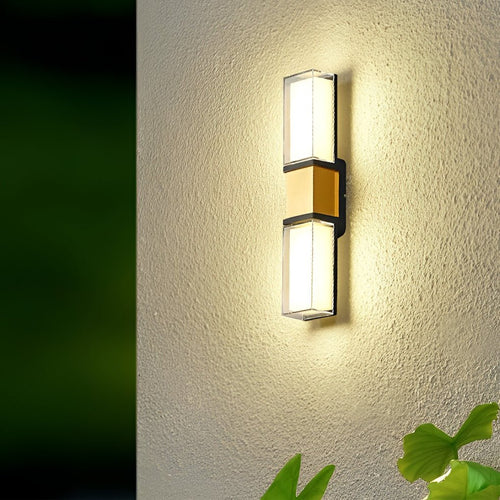



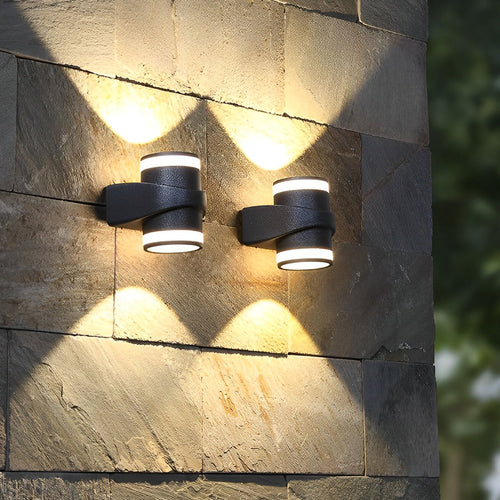
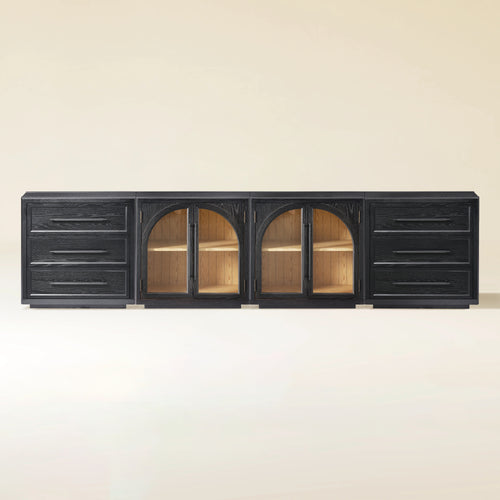

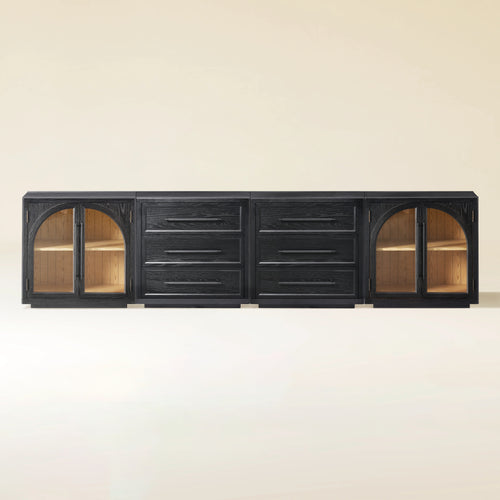
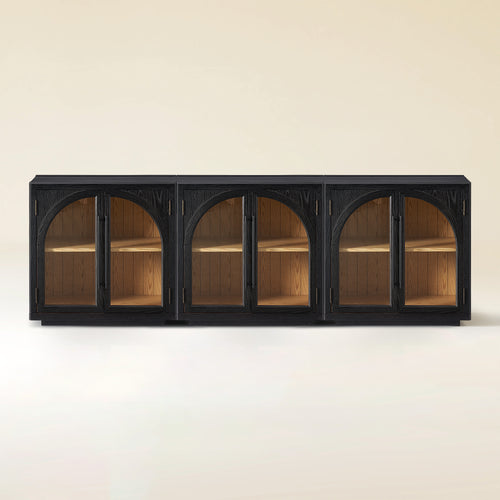
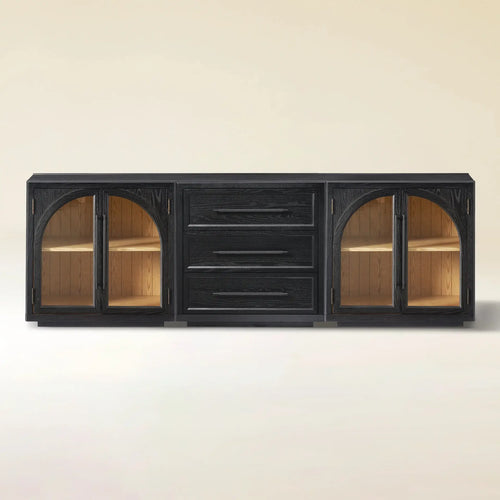
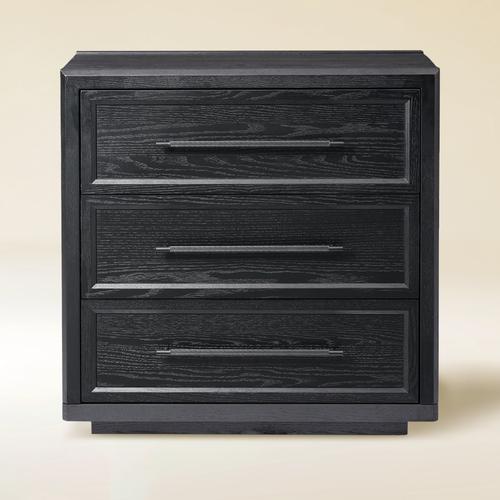
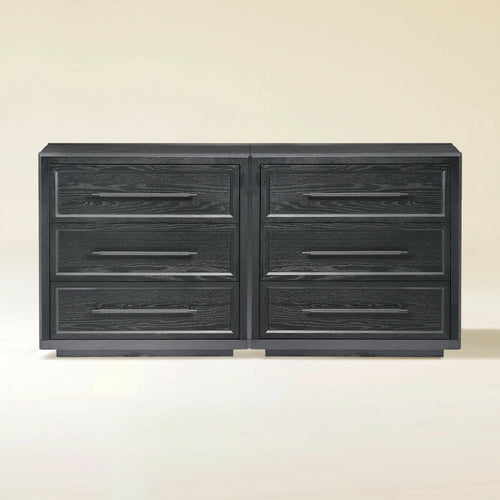
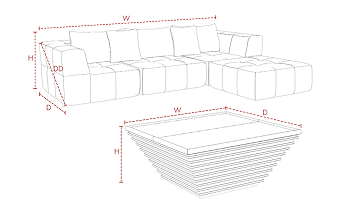
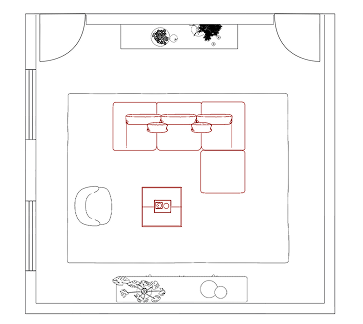
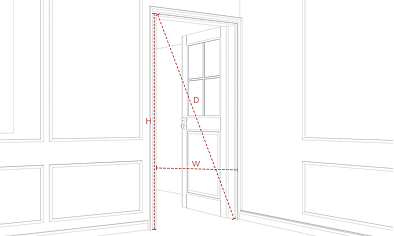
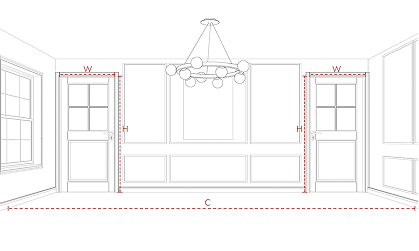
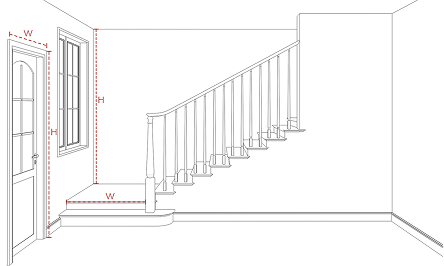
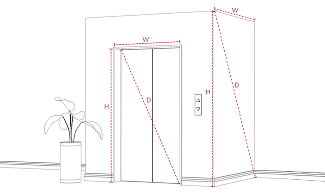












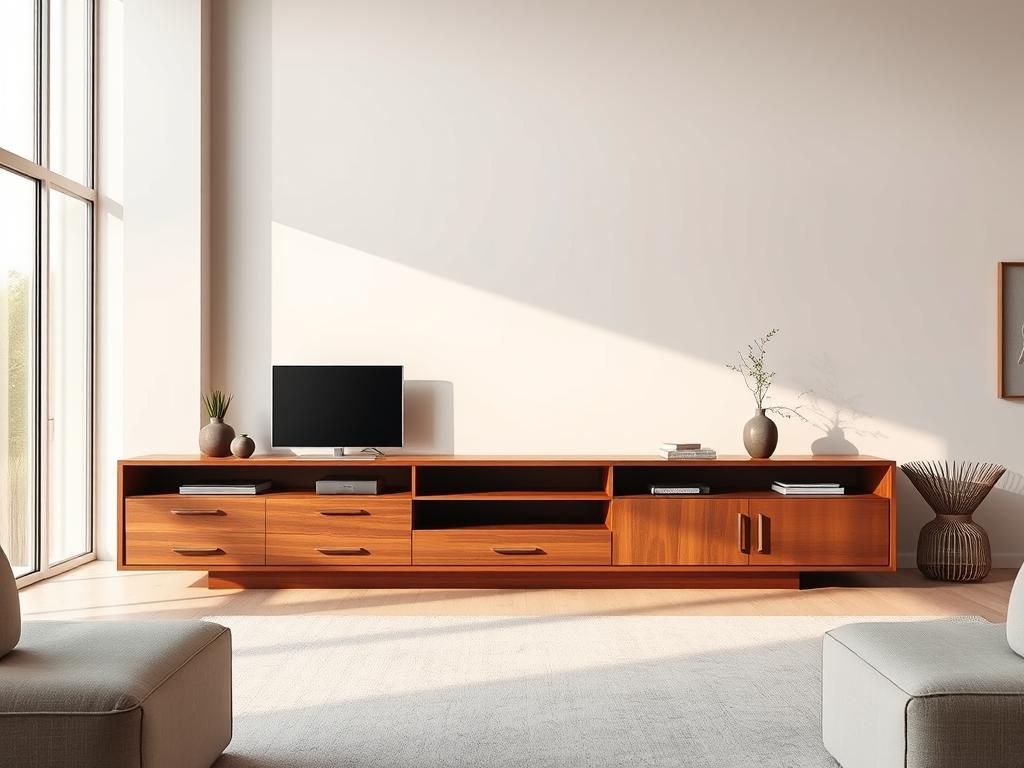
Share:
How High Above Media Console Should TV Be Mounted
How Tall Should a Media Console Be for Your TV?